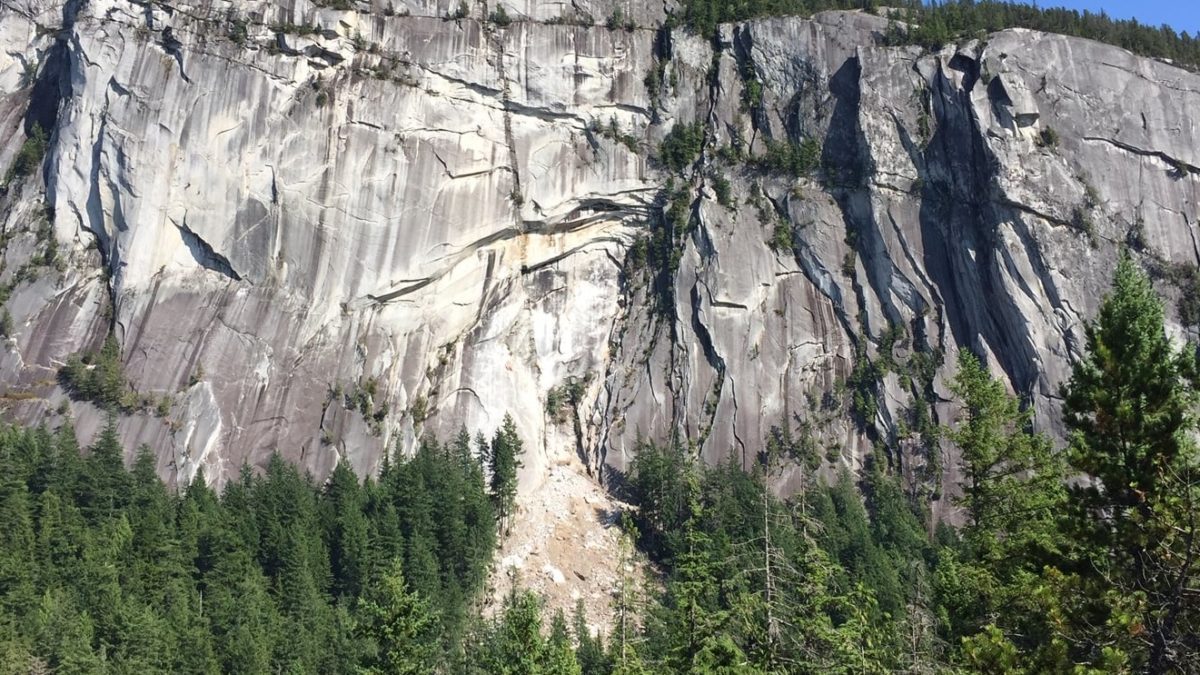The Latest Rockfall in Squamish Annihilated These Pitches
Some of the steepest pitches on the Black Dyke have been erased from The Chief

Yesterday, we reported that another big rockfall took place on The Chief in Squamish. Local climber Jim Sandford sent us photos of the scree cone created from the rockfall beneath the famous Black Dyke route, see them here.
Updates from the Squamish Access Society have given more insight into where the rockfall came from. It’s clear from before and after photos that the chunk of rock that toppled dozens of 30-metre trees came from about 100 metres above the start of the Black Dyke route and included pitches three and four of that famous climb. It included pitches from a number of aid route to the right and left of the Black Dyke.
A dyke (British spelling) or dike (American spelling), occurs when rock forms in a fracture of a pre-existing rock body. In the case of The Chief, the Black Dyke is a vertical piece of basalt that runs vertically from the bottom to the top of west-facing granite south of the Grand Wall.
In 1970, Al Givler and Mead Hargis managed to aid their way up the steepest lower section of the Black Dyke to Bellygood Ledge. In 1975, Gordon Smaill published Squamish Chief Guide and said this about the route: “This climb turns into a veritable bag of liver in the rain.” Below Bellygood are seven pitches, of which the hardest were freed in 2002 by Matt Maddaloni and partners at 5.10b, 5.10d, 5.12c, 5.13b. Pitches five to seven were freed by Dean Hart and partners in 1990 at 5.10c, 5.12a and 5.9. The upper four pitches to the top of the wall were freed in 1974 by Smaill and Robin Barley at 5.9, 5.8, 5.10b and 5.10a.
Maddaloni wrote on Gripped’s Facebook after the story of the rockfall went public, and said, “Talk about humbling. Several first ascents of mine have been decimated by rockfall in the past few years. Some of my favorite and cherished lines like Yukon Gold and Chilkoot Pass near Northern Lights and now the Black Dyke. Glad to be alive and kickin but let me tell you my perspective on the ‘forever in stone’ of rock is a bit shattered. Pun intended. Be careful out there.”
As Squamish historian Anders Ourom said, “It’s not so much what just fell – it’s what else may be waiting. I’ve always wondered how the ‘recess’ (depression?) between Black Dyke and Zodiac Wall formed. It’s quite inset.”
The Black Dyke area is currently closed and will be for some time. If you see any rockfall on The Chief, be sure to inform the Squamish Access Society.



